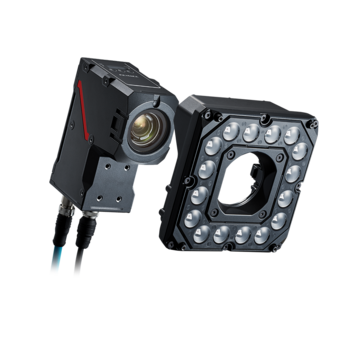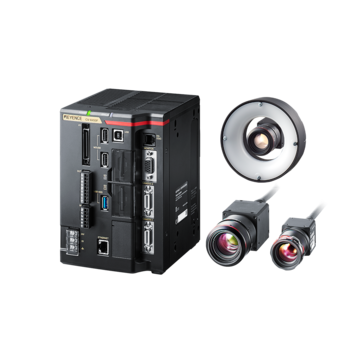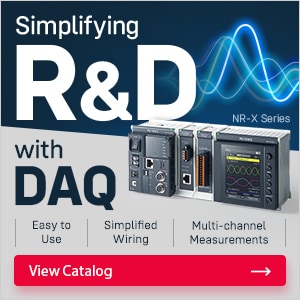Vision Systems
- Vision System with Built-in AI VS series
- Intuitive Vision System CV-X series
- Customizable Vision System XG-X series
- GigE camera and lighting for PC-based machine vision VJ series
- Inline 3D Inspection 3D Vision series
- 3D Vision-Guided Robotics 3D VGR series
- Line Scan Technology Line Scan series
- 2D Vision-Guided Robotics 2D VGR series
- LED Lighting CA-D series
- Lenses (for Machine Vision) CA-L series
- Machine Vision System Database VisionDatabase series
- 2D Measurement Inspection
- Optical Character Reading (OCR) and 1D/2D Code Verification
- Inline 3D Volume and Measurement Inspection
- Presence & Absence Inspection
- Flaw Detection
- 3D Vision-Guided Robotic Bin Picking
- High-Resolution Line Scan Cameras for High-Speed Imaging
- Automated Positioning and Alignment Systems Using Machine Vision
- Automotive
- Automation Equipment/Machine Building
- Electric Vehicles
- Medical Device Manufacturing
- Food/Beverage Packaging
- Semiconductor/Manufacturing Electronics
- Vision-Guided Robotics
- Solar
- Logistics
- Commodities
- Paper Manufacturing
- Machine Tools
- Electronic Device
- Printing
- Mining/Metals
- Fabric/Textile
- Tobacco
- Marine
- Aerospace
Automated Positioning and Alignment Systems Using Machine Vision
Automated positioning and alignment systems use machine vision to capture and analyze objects, providing feedback in real-time to mechanical equipment. These types of vision systems will guide the mechanical equipment or material handling systems to be able to locate, inspect, work on, and manipulate objects like parts, tools, and assemblies on high-speed production lines.
We’re here to provide you with more details.
Reach out today!

What is Image-Based Positioning & Alignment?
Image-based positioning and alignment is the process where machine vision image processing has been combined with camera inspections in order to evaluate a number of criteria:
- Presence and quantity of parts/products
- Appearance of foreign particles or any flaws
- Dimensions of the parts/products
- Exact positioning of the parts/product
This is typically done by capturing an image of the parts or products and correlating that image to another reference image of an alignment mark. As you can imagine, it takes an extremely accurate camera and image processing system to position and align objects perfectly.
How Automated Positioning and Alignment Works
Taking a look at the automated positioning and machine vision image alignment process from a high level, it includes:
- Capturing Images: Parts are moving at high speeds on production lines, and industrial cameras like the VS Series can capture accurate pictures at these speeds.
- Comparing to Reference Markers: The image that is captured in the first step must be evaluated against standard reference marks/data to make sure they are in the correct position.
- Detecting Errors: The software in the system is able to recognize when an object is not in the correct position, orientation, or scale.
- Providing Feedback: A constant real-time corrections loop has to be in operation on the mechanical equipment to ensure that they are precisely in the correct position at all times.
Get detailed information on our products by downloading our catalog.
View Catalog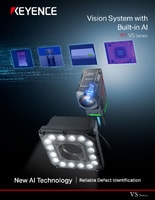

Common Use Cases Across Industries
Automated positioning and alignment systems are used in a wide variety of industries due to their easily adaptable system and software.
Electronics Manufacturing
Automated positioning and alignment systems are critical in electronics manufacturing. As everything is on a mini or even micro scale in electronics, parts have to be in exactly the right position at all times to ensure there are no defects. Even the smallest deviation in position here would render a part useless. The extreme accuracy machine vision systems can bring to the table here is vital to this industry’s success. Applications include PCB assembly alignment, solder paste inspection, and microchip placement.
Automotive
Everyone has seen the video of automotive manufacturing plants where the automated robotic arms are assembling the vehicles. That is a real-life depiction of the automotive assembly process, and it is made possible by the positioning and alignment that machine vision systems provide. It allows the mechanical arms to weld parts in place, assemble the vehicle, and ensure that assemblies like the engine and drivetrain are placed in exactly the right position.
Pharmaceuticals
Pharmaceuticals are another industry that depends on object accuracy for safety and compliance. Packaging inspection, vial alignment, and label verification all have a direct impact on whether the product will be safe for the end-user. The accuracy of machine vision systems like the CV-X Series reduces any waste due to failed inspections, incorrect labeling, etc.
Get detailed information on our products by downloading our catalog.
View Catalog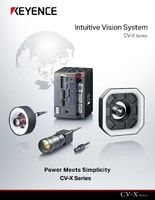

Key Features of Positioning Using Image Processing Systems
Machine vision image processing systems possess a number of impressive features that make them very valuable to the industries mentioned above. Some of the most important features are:
- Extreme Accuracy: Parts are correctly positioned down to the micron due to the sub-pixel precision that machine vision systems have.
- Flexibility: Machine vision image processing systems can work in a variety of environments and across many different shapes, sizes, and materials. Even reflective surfaces can be accurately processed.
- Constant Feedback Loop: As mentioned above, the constant adjusting and ensuring the mechanical equipment has the part perfectly aligned is what makes these image processing systems so effective.
- Scalability: Image processing systems support a wide range of applications due to their compatibility with single stations and multi-camera, industrial plant-size systems.
Solving Common Challenges with Machine Vision Image Processing
Machine vision systems, with tier image processing and positioning/alignment capabilities, solve many challenges that existed before this technology was available. They can identify misaligned parts by detecting even slight angular shifts or displacements, ensuring errors are corrected before they impact downstream processes. Advanced algorithms handle part variability by distinguishing acceptable tolerances from true defects, preventing false rejects while maintaining strict quality control. For high-speed production lines, parallel image processing ensures inspections keep pace without creating bottlenecks.
If your production line could benefit from tighter accuracy and fewer errors, explore how KEYENCE’s advanced machine vision solutions can transform your operations. Learn more about KEYENCE Vision Systems today.
Contact us to learn more about how our advanced technology can help take your business to the next level.
Contact Us
FAQs
What is Alignment in Image Processing, and How is It Used in Manufacturing?
Alignment is the constant feedback loop of correcting any and all deviations from the correct part placement. This is essential for meeting tolerances in industries like manufacturing.
How Do Automated Positioning and Alignment Systems Improve Production Accuracy?
Corrections are sent to the mechanical equipment constantly and in real-time to guarantee accuracy. This level of accuracy reduces rework, waste, and machine downtime, and also produces parts of the highest quality.
Can Machine Vision Image Processing Detect Misaligned or Rotated Parts?
Yes. The software used in machine vision systems can detect misaligned and/or rotated parts using algorithms. This type of software is so advanced that it can even run these algorithms on high-speed production lines with precise accuracy.
What Types of Applications Use Machine Vision Image Alignment?
Machine vision image alignment is used in a wide number of industries like automotive, pharmaceutical, electronics, and food and beverage.
We’re here to provide you with more details.
Reach out today!

Related Downloads
Related Products
Applications
- 2D Measurement Inspection
- Optical Character Reading (OCR) and 1D/2D Code Verification
- Inline 3D Volume and Measurement Inspection
- Presence & Absence Inspection
- Flaw Detection
- 3D Vision-Guided Robotic Bin Picking
- High-Resolution Line Scan Cameras for High-Speed Imaging
- Automated Positioning and Alignment Systems Using Machine Vision
Industries
- Automotive
- Automation Equipment/Machine Building
- Electric Vehicles
- Medical Device Manufacturing
- Food/Beverage Packaging
- Semiconductor/Manufacturing Electronics
- Vision-Guided Robotics
- Solar
- Logistics
- Commodities
- Paper Manufacturing
- Machine Tools
- Electronic Device
- Printing
- Mining/Metals
- Fabric/Textile
- Tobacco
- Marine
- Aerospace

